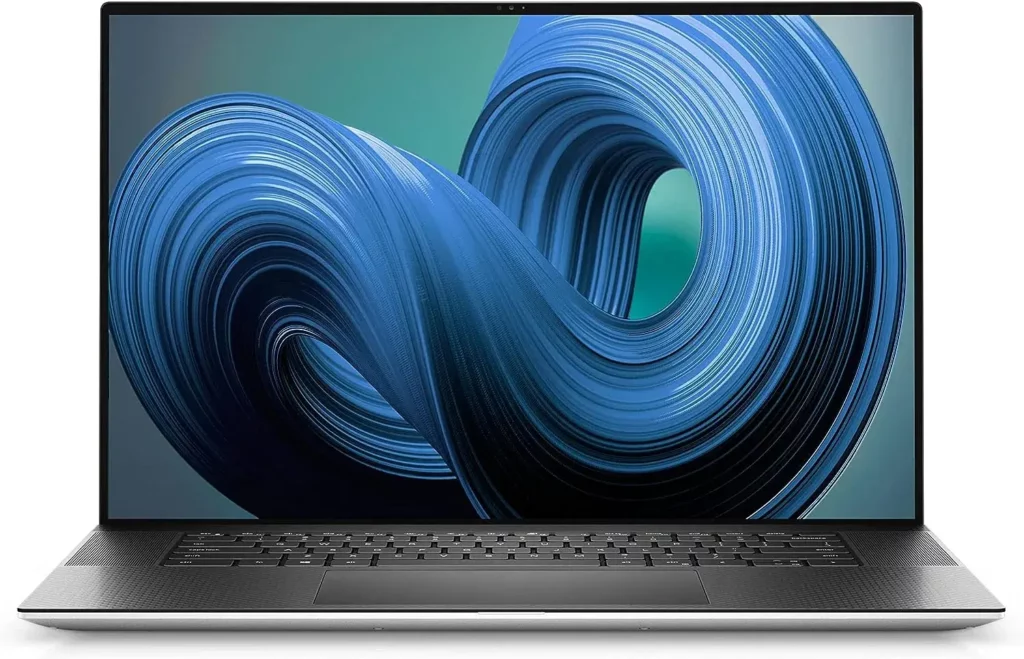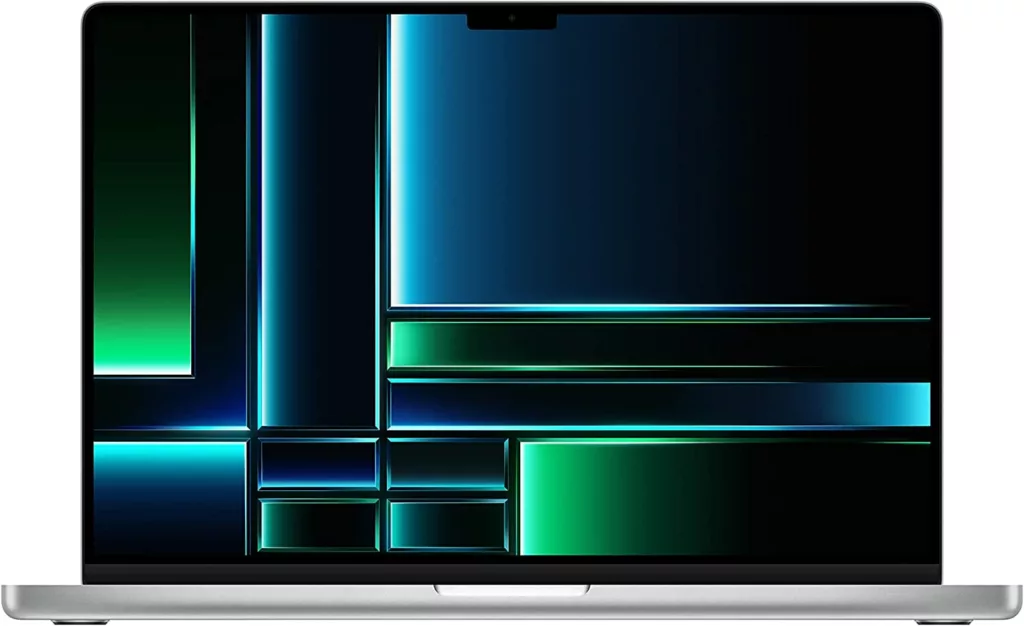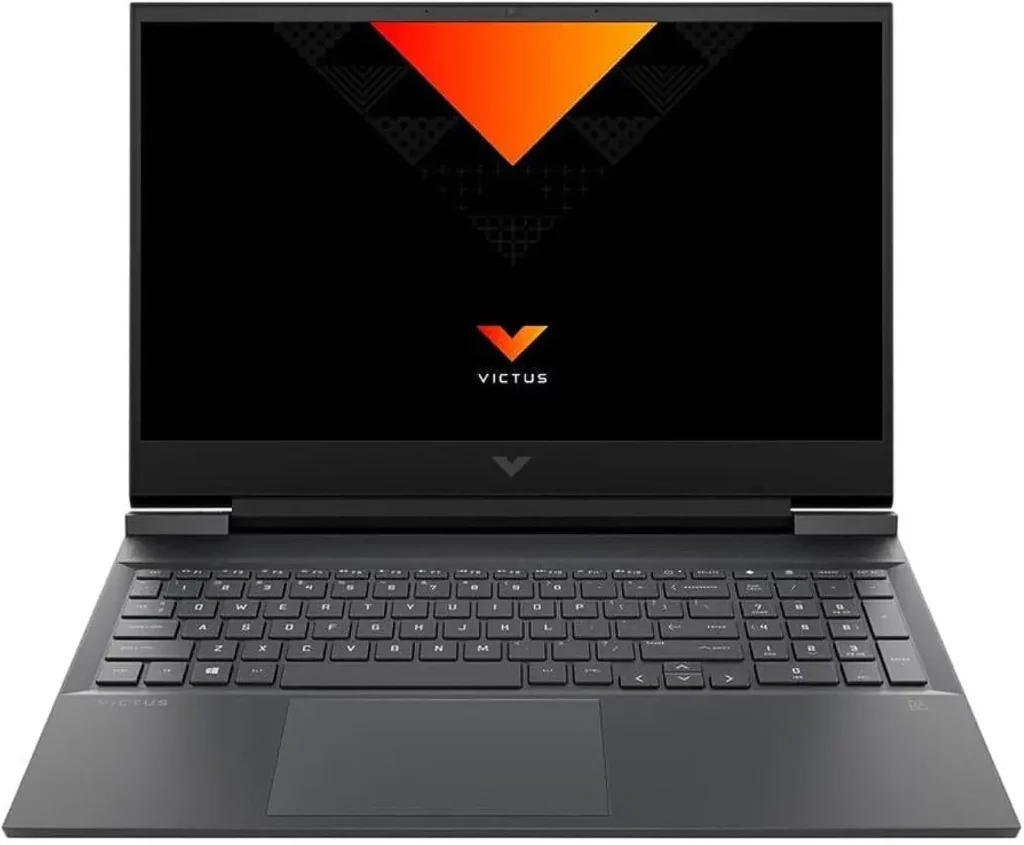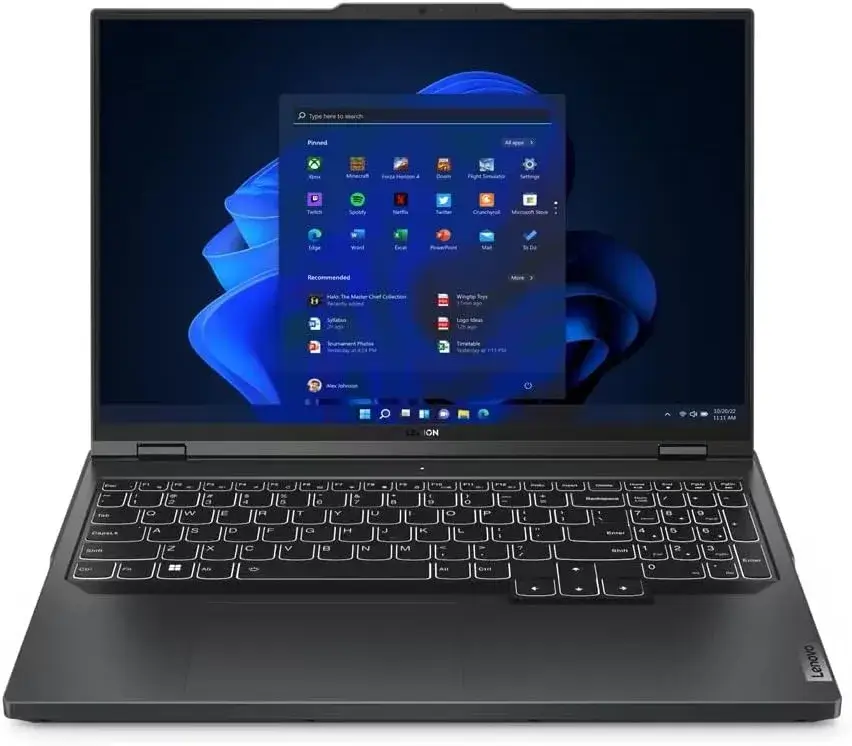In today’s data-driven society, Bioinformatics combines the disciplines of Biology, Computing, and Statistics. In bioinformatics, students learn genome sequencing, protein structure prediction, and complicated biological data mining.
In order to achieve success in this interdisciplinary field, it is crucial to have access to the right tools. In this article, we provide the top five laptops designed to satisfy the specific needs of bioinformatics students. These portable computers can help you analyze large datasets and execute complex simulations.
Through these laptops, we bring you one step closer to discovering the secrets of life that are written in DNA and RNA. So, let’s explore the finest laptops for bioinformatics, where cutting-edge technology meets the marvels of the life sciences.
Our Picks for You!
Considering the required features in a laptop for Bioinformatics Students we have carefully chosen the Best five laptops for Bioinformaticians.
Tabular Summary
Here is the tabular summary of all the Laptops for a quick comparison!
| Laptops | Dell XPS 9720 | Apple MacBook Pro | HP Victus 15 | ASUS ZenBook Pro 14 | Lenovo Legion Pro 5 |
|---|---|---|---|---|---|
| Screen Size & Resolution | 17-inch | 16-inch | 15.6-inch | 14.5-inch | 16-inch |
| Resolution | 3840 x 2400 pixels | 2048×1536 / 3456×2234 pixels | 1920 x 1080 pixels | 2560 x 1600 pixels | 2560 x 1600 |
| Processor | 2.9 GHz core i7 | 12-Core CPU | 4.4 GHz AMD Ryzen 7 5800H | 5.4 GHz Intel Core i9 | 2.9 GHz Intel Core i9 |
| RAM | 32GB DDR5 | 32GB DDR4 | 16 GB DDR4 | 32 GB DDR5 | 64 GB DDR5 |
| Storage | 1TB SSD | 2TB SSD | 4 GB SSD | 1 TB SSD | 2TB SSD |
| Graphics Card | NVIDIA GeForce RTX 3060 (6GB) | GPU | NVIDIA GeForce RTX 3050 (4GB) | NVIDIA GeForce RTX 4070 (8GB) | NVIDIA GeForce RTX 4070 (8GB) |
| Battery Life | Up to 9 hours | Up to 22 hours | Up to 8 hours | Up to 12.5 hours | Up to 6 hours |
| Operating System | Windows 11 Pro | macOS | Windows 11 Home | Windows 11 Home | Windows 11 Pro |
| Dedicated Graphics Card | Yes | Yes | Yes | Yes | Yes |
Detailed Review
Highlights:
- 17-inch screen with a resolution of 3840 x 2400 pixels
- A 2.9 GHz core i7 processor
- 32GB DDR5 RAM power this machine
- 1TB SSD provides plenty of space for data storage.
- NVIDIA GeForce RTX 3060 graphics card with 6GB DDR6 memory for crisp visuals
- An average of 9 hours of continuous use through the day
- Windows 11 Pro to increase software compatibility
- Four USB 3.0 ports are available for connecting external devices
- Portable and ideal for on-the-go use
Review
For bioinformaticians, the Dell XPS 9720 is an excellent pick. It has a large 17-inch display with a sharp 3840 x 2400 pixel resolution, which makes it perfect for data analysis and visualization jobs. With a 2.9 GHz core i7 processor and 32GB of DDR5 RAM, this laptop can easily handle difficult computing tasks. Large genomic datasets and bioinformatics applications can be stored on the 1TB SSD.
The NVIDIA GeForce RTX 3060 with 6GB DDR6 RAM delivers smooth rendering and increased performance for biology applications. You have access to a large choice of bioinformatics tools and applications when you use Windows 11 Pro as your operating system. In terms of connectivity, it has four USB 3.0 ports for connecting external devices and accessories.
The laptop weighs 5.34 pounds and is designed to strike a balance between portability and performance. It’s ideal for on-the-go research and analysis, with an average battery life of 9 hours. With its powerful hardware and diverse features, the Dell XPS 9720 is an excellent choice for bioinformaticians looking for a reliable and efficient computing tool for their job.
Highlights:
- 16-inch Retina display with 2048×1536 and 3456 x 2234 pixels
- 12-Core CPU and 30-core GPU processor power resource-intensive bioscience activities
- 32GB of DDR4 RAM provides bioinformatics research for effective data processing
- 2TB SSD provides quick data access and storage.
- GPU-accelerated bioinformatics and data visualization graphics card
- Average battery life of 22 hours, perfect for long research sessions
- Runs on macOS and provides bioinformatics UNIX utilities
- Three USB 3.0 ports for external devices
- Sleek and durable design
Review
The Apple M2 Max 16-inch Retina display (2048×1536 pixels) provides vibrant and detailed visuals for data research and visualization, this resolution provides the necessary precision for bioinformatics studies. The 12-core CPU and 30-core GPU processor provide powerful computing as bioinformatics students must undertake computationally hard activities like sequence analysis and molecular modeling at this level.
The MacBook Pro can handle huge datasets and advanced bioscience apps with 32GB of DDR4 RAM. For students working on complicated research projects, this substantial RAM ensures smooth multitasking and effective data processing. The laptop’s 2TB SSD provides fast data access and ample space for huge genetic datasets, research findings, and analytical outputs.
A dedicated graphics card makes data visualization and GPU-accelerated bioinformatics tools easy on this laptop, making studying smooth and productive. The MacBook Pro’s 22-hour average battery life lets bioinformatics students work on projects and research without recharging.
Bioinformatics students who need UNIX-based tools and software should utilize this macOS laptop. While a 16-inch desktop, its mobility makes it suitable for classroom and lab use. It has three USB 3.0 ports for data storage and bioinformatics devices. The MacBook Pro’s elegant, durable design promotes academics and research.
Bioinformatics students should consider the MacBook Pro due to its powerful processor, ample RAM and storage, stunning Retina display, long-lasting battery life, and macOS operating system.
Highlights:
- 15.6-inch Full HD (1920 x 1080 pixels) display for clarity
- Powerful eight-core 4.4 GHz AMD Ryzen 7 5800H processor
- Smooth multitasking with 16 GB DDR4 RAM
- NVIDIA GeForce RTX 3050 with 4 GB dedicated graphics
- 4 GB SSD for rapid data and software loading
- Up to 8 hours Battery life
- Windows 11 Home is user-friendly
- USB 3.0 and 802.11a/b/g/n/ac wireless connection
Review
The HP Victus is the finest laptop for bioinformaticians due to its superior features. Its 15.6-inch Full HD 1920 x 1080 display is ideal for processing complex scientific data and genomic sequences. It is ideal for demanding computer duties due to its 4.4 GHz AMD Ryzen 7 5800H processor with eight cores and fast clock speeds.
With 16 GB of DDR4 RAM, it is capable of multitasking, managing massive datasets, and running resource-intensive bioscience software. The NVIDIA GeForce RTX 3050’s 4 GB of dedicated graphics memory accelerates visualization, molecular modeling, and 3D rendering for bioinformaticians. With a 4 GB SSD (Solid-State Drive), bioinformatics programs and enormous datasets load quicker, enhancing productivity.
The eight-hour battery life allows for uninterrupted work. The laptop comes equipped with 802.11 wifi and multiple USB 3.0 ports for data transmission and internet research. Windows 11 Home simplifies and secures bioinformatics. Despite its impressive specifications, it’s lightweight. This makes it suitable for both stationary and mobile research. The laptop’s NVIDIA GeForce RTX 3050 graphics hardware is capable of visualizing biology applications.
Finally, bioinformaticians should consider the potent AMD processor, RAM, specialized graphics, and high-resolution display of the HP Victus 15-fb0028nr. It is a crucial computational biology and bioinformatics utility due to its portability and Windows 11 compatibility.
Highlights:
- 14.5-inch 2560 x 1600 for great graphics
- Lightning-fast 5.4 GHz Intel Core i9 CPU
- 32 GB DDR5 RAM for multitasking
- 1 TB SSD for rapid data access
- NVIDIA GeForce RTX 4070 with 8 GB dedicated GPU
- 12.5 hours of impressive battery
- Windows 11 Home is user-friendly
- Lightweight and portable
Review
The ASUS Zenbook Pro 14 is an excellent laptop for bioinformatics professionals who value portability and performance. Its feature set meets the computational requirements of this discipline. This laptop has a 14.5-inch, 2560 x 1600-pixel display, that provides bioinformaticians with a spacious, clutter-free workspace to investigate complex biological data and genetic sequences.
The laptop is driven by a 5,4 GHz Intel Core i9 processor. With 32 GB of DDR5 RAM, it is simple to multitask and perform data-intensive bioinformatics applications, making it an analytical computing powerhouse. Its 1 TB SSD offers ample storage space. It has an impressive battery that lasts up to 12.5 hours.
The Laptop also has an NVIDIA GeForce RTX 4070 graphics coprocessor and 8 GB of dedicated graphics memory. This specialized GPU can be utilized for bioinformatics visualization, molecular modeling, and 3D rendering. The laptop is compact and light in weight making it easy to carry between classes and labs. The laptop operates on Windows 11 Home, a secure and user-friendly operating system.
The ASUS Zenbook Pro 14 is an outstanding laptop for bioinformatics professionals. It features a monitor with a high resolution, a potent Intel Core i9 processor, a large SSD, and a dedicated NVIDIA graphics card. Its small dimensions and low weight make it a valuable asset for bioinformatics research in the lab and the field.
Highlights:
- 16-inch, 2560 x 1600 display
- Powerful 2.9 GHz Intel Core i9 CPU
- Ample 4800 MHz 64 GB DDR5 RAM
- Large 2 TB SSD for fast data access
- GeForce RTX 4070 (8 GB) GPU RAM
- Up to 6 hours of battery time
- Advanced 802.11ax wireless
- Six USB 3.0 ports for flexible device connections
- Windows 11 Pro for Multiple software compatibility
Review
The Lenovo Legion Pro 5 is an excellent laptop for the computing requirements of bioinformaticians. Its 16-inch display with 2560 x 1600 pixels offers a large screen for conducting in-depth research on complex biological data and genetic sequences. The laptop is powered by a 2.9 GHz Intel Core i9 processor. It is ideal for scholars because its 64 GB of DDR5 RAM and 4800 MHz processor makes data-intensive work easy.
A 2 TB SSD offers ample storage space that offers quick access to large databases, essential for data analysis. For molecular modeling and data display, bioinformaticians need sophisticated graphics. The NVIDIA GeForce RTX 4070 graphics coprocessor with 8 GB of RAM fulfills this requirement. It has advanced connectivity options with 802.11ax wifi and six USB 3.0 connections for connecting devices and accessories.
It has a battery time of up to 6 hours which can take you through productive hours. It is portable for fieldwork and laboratory research. The laptop’s Windows 11 Pro operating system provides a secure, efficient, and software-compatible computing environment for bioinformatics.
The Lenovo Legion Pro 5 is a bioinformatician-friendly laptop with a high-resolution display, a potent Intel Core i9 processor, ample RAM and storage, dedicated graphics, and advanced connections. Its portability and Windows 11 Pro operating system make it a versatile research and analysis instrument for bioinformatics.
Conclusion
In conclusion, when it comes to choosing the best laptop for bioinformatics, these five options provide a variety of solutions to satisfy the specific requirements of students, researchers, and professionals in the field. The Dell XPS 9670 achieves a balance between performance and portability, whereas the Apple MacBook Pro features a remarkable Retina display and robust hardware.
For budget-conscious consumers, the HP Victus 15 offers affordability without compromising on essential features. The ASUS ZenBook Pro 14 is distinguished by its high-performance Intel Core i9 processor and ample RAM, while the Lenovo Legion Pro 5 is distinguished by its large display and dedicated graphics. In the end, the choice is determined by personal preferences, computational requirements, and budgetary constraints, ensuring that bioinformaticians have a variety of options to meet your research and analysis requirements. We hope that this article will help you in making the best choice. Also, read our article Best Laptops For Data Science Students In 2023.
Bioinformatic Software Tools and Programs
When buying a laptop, ensure it meets the necessary specifications for your program of study and commonly used software. Bioinformatics students commonly use a variety of software tools and programs to analyze biological data, perform computational experiments, and conduct research. Here is a list of some commonly used bioinformatics software:
- BLAST (Basic Local Alignment Search Tool): Used for sequence similarity searching to identify homologous genes or proteins.
- NCBI Entrez Utilities: A suite of tools for accessing and retrieving data from the National Center for Biotechnology Information (NCBI) databases.
- UCSC Genome Browser: A web-based tool for visualizing and analyzing genomic data.
- Bioconductor: A collection of R packages for the analysis and visualization of high-throughput genomics data.
- BEDTools: A set of tools for manipulating genomic intervals and performing operations on them.
- BWA (Burrows-Wheeler Aligner): Used for aligning DNA sequencing reads to a reference genome.
- SAMtools: A suite of programs for manipulating and analyzing sequence alignment data in the SAM/BAM format.
- GATK (Genome Analysis Toolkit): A toolkit for variant discovery in high-throughput sequencing data, particularly for calling SNPs and indels.
- STAR: A fast RNA-seq aligner for mapping RNA-seq reads to a reference genome.
- TopHat and HISAT2: Alignment tools for RNA-seq data, used to identify splice junctions and quantify gene expression.
- DESeq2 and edgeR: R packages for differential gene expression analysis from RNA-seq data.
- MUSCLE and ClustalW: Multiple sequence alignment tools for aligning protein or nucleotide sequences.
- RAxML and PhyML: Software for constructing phylogenetic trees from sequence data.
- BEDOPS: A suite of tools for manipulating and analyzing genomic interval data.
- Galaxy: A web-based platform for bioinformatics analysis that offers a wide range of tools and workflows.
- IGV (Integrative Genomics Viewer): A desktop tool for visualizing and exploring genomic data, including next-generation sequencing data.
- Artemis: A genome viewer and annotation tool that allows for the visualization and manipulation of DNA sequence data.
- Biopython and BioPerl: Libraries for bioinformatics programming in Python and Perl, respectively.
- R and RStudio: Statistical analysis and visualization tools used for data analysis in bioinformatics.
- Jupyter Notebook: A popular platform for creating and sharing documents that contain live code, equations, visualizations, and narrative text, often used for interactive data analysis.
There are numerous software tools available for bioinformatics research. The selection of software largely depends on the specific research goals and tasks involved in a bioinformatics project. It may be helpful to review the buying guide below to ensure that the chosen laptop is capable of running any of the aforementioned software seamlessly.
Laptop Buying Guide 2023: Best Laptops for Bioinformatics Students
Several key features should be considered when purchasing a laptop for bioinformatics students to ensure that it fulfills all the requirements of this field. Here are the key characteristics to look for!
Processor: A strong processor is essential for performing complex computational operations. Look for laptops with Intel Core i7 or higher CPUs, in order to gain good performance.
RAM: For multitasking and data analysis, use a laptop with at least 16GB of RAM. A RAM of 32GB or greater is appropriate for more intensive tasks.
Storage: For faster data access, Solid-State Drives (SSDs) are favored over Hard Disk Drives (HDDs). A minimum of 512GB SSD storage is recommended.
Graphics: While dedicated graphics aren’t always required in bioinformatics, they might be useful for molecular modeling and data visualization activities. NVIDIA GPUs are an excellent choice.
Display: For viewing complex data, a high-resolution display with good color accuracy is required. Look for a resolution of at least Full HD (1920 x 1080).
Battery Life: A Long battery life is essential for students who need to work on the go. Choose a laptop that can run for at least 8 hours on a single battery.
Operating System: For bioinformatics work, both Windows and macOS are solid choices. Select the one that suits your needs and software compatibility. The right OS is crucial, impacting individuals and organizations. If undecided on Mac or PC, read our “Mac Vs PC – A Comprehensive Guide” for insights.
Portability: For students who need to move between courses and computer labs, a lightweight and compact laptop is ideal.
Connectivity: Make sure the laptop includes a number of connections for connecting to external devices and screens, such as USB, HDMI, and Thunderbolt. Wi-Fi 6 and Bluetooth 5.0 or above offer quick and stable wireless connections, which are critical for collaboration and data transfer.
Finally, decide on a budget and look for a laptop that has the best combination of these qualities within your price range. Bioinformatics students can pick a laptop that enables them to solve computational obstacles and flourish in their studies by prioritizing these aspects.
Additional Features:
Bioinformatics students may benefit from a variety of other tools and accessories in addition to a powerful laptop to increase their productivity and efficiency in their coursework and research. Here are a few practical choices:
External Hard Drive: Large datasets are frequently used in bioinformatics work, hence an external hard drive is recommended. You may help to back up and keep your data securely by using an external hard drive with enough storage space.
External Monitor: A larger, high-resolution external monitor gives you extra screen space for multitasking and data visualization. It might enhance the screen on your laptop.
Mechanical Keyboard: Long sessions of coding and data entry may benefit from the haptic and precise typing experience provided by a mechanical keyboard.











